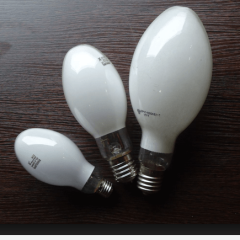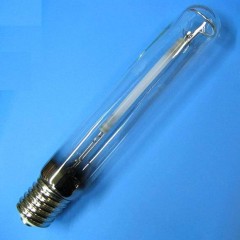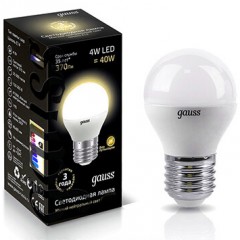Which lamps are best suited for growing plants?
It is very important to choose the right bulbs for growing indoor, greenhouse and aquarium plants. If you make a mistake in choosing, the further consequences can be disappointing: seedlings (or algae) may simply not have enough light, which may stop their growth or more serious problems - too bright lighting and heat generation will burn leaves, which will lead to the death of the plant world. In order for various kinds of trouble not to occur, you need to know which lamps for plants are best to choose, buy and use in the future. Further we will provide you with a comparison of all the most popular types light sources: From incandescent bulbs to LEDs.
Overview of existing light bulbs
To make the information easier to perceive, we will simultaneously list all the existing types of lamps that are best suited for illumination and growing plants, and immediately talk about how rational to use each option.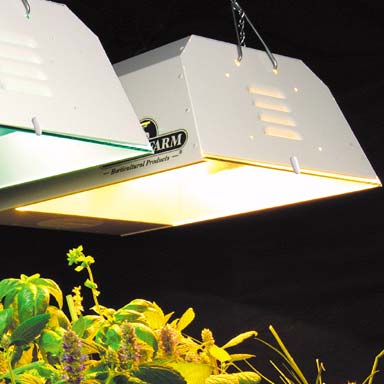
So, today, to illuminate the plant world in the house, you can choose and use such light sources as:
- Incandescent lamps. The cheapest and not recommended option for many reasons: they have a short service life, poor light output (up to 17 Lm / W) and significant heat generation. As a result, seedlings or indoor flowers in a pot will not receive the necessary amount of light, as a result of which this will negatively affect the growth rate and, accordingly, the correctness of cultivation. In addition, too powerful a bulb can burn leaves if placed next to a plant. Bottom line - this option in no case should be used at home, because it is best to choose more modern and efficient types of lamps, which we will talk about below.
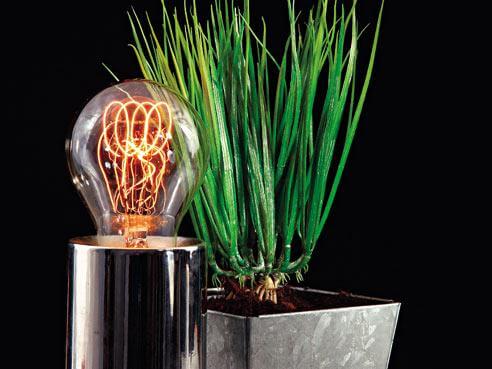
- Fluorescent (energy-saving) lamps. This option is much more appropriate to choose and use to highlight the vegetation in the house, greenhouse and directly in the aquarium. Energy-saving light sources have many advantages, namely: high light output, low heat generation and efficiency, which makes them a good option for lighting indoor and aquarium plants. In addition, there are special luminescent phytolamps that are intended only for growing seedlings and flowers.
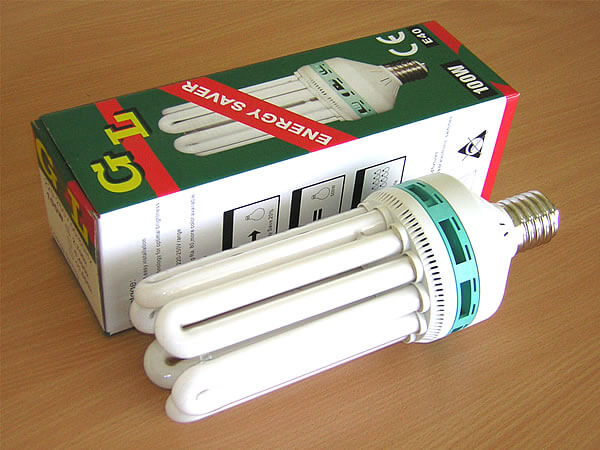
- LED light bulbs. LEDs are the youngest type of light bulbs, which in a short period of time managed to gain high interest in various fields of application. LED lamps are better for plants due to the fact that they consume a minimum amount of electricity, practically do not emit heat, and besides, there can be a different spectrum of light radiation, which allows you to choose the right LED bulbs for your own kind of plants in the house.
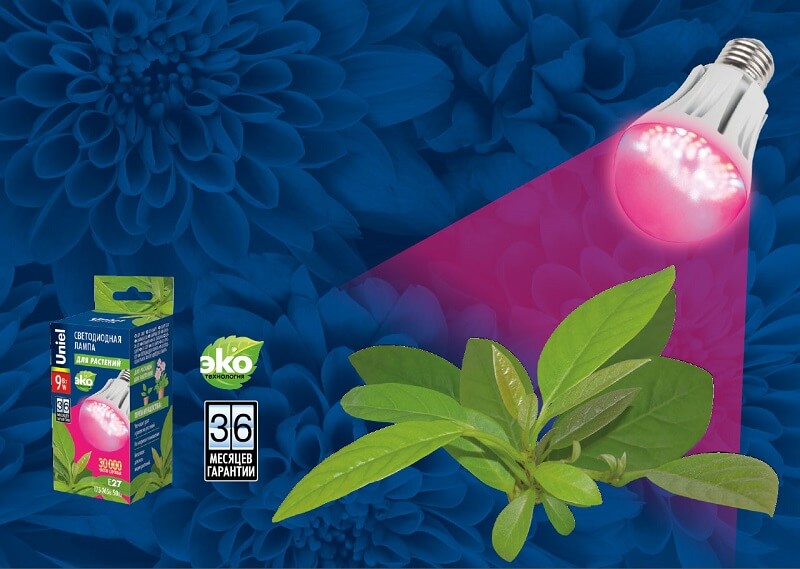
- Gas-charging (sodium, mercury, metal halide). This variant of lighting products needs to be discussed in more detail, becauseNot all gas charging lamps are suitable for growing plants. Of all these options, mercury lamps are the worst for plant growth in a home, greenhouse, and aquarium. This is due to the fact that DRL bulbs have a luminous flux of almost 2 times less than sodium and metal halide light sources. In addition, the light spectrum of mercury products is not quite suitable for the development and further growth of seedlings, flowers, algae. As for sodium lamps - DNA, they shine bright yellow-orange, which is very consistent with natural sunlight. Experts recall - it is better to choose and use mercury light bulbs for growing flowering plants. Well, the last option - metal halide lamps are the most expensive, but at the same time the most suitable sources of lighting for those representatives of the "green world" who prefer vegetative growth rather than flowering.
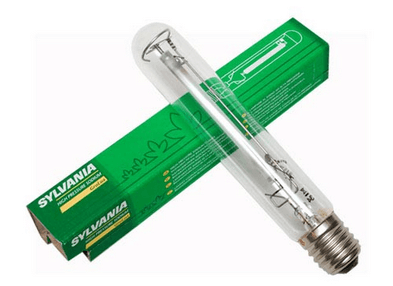
So we told you which lamps are suitable for lighting and growing indoor plants. We draw your attention to the fact that for the home the most optimal options for price and efficiency will be CFL fluorescent lamps, which have a light output from 80 to 100 Lm / W. If it is possible to squander a little more, it is better to choose LED lamps for plants, which nevertheless surpass the sodium lamps previously used in greenhouses and greenhouses!
You can learn more about which bulbs are better for growing seedlings (for example, tomatoes) or flowers, in the video examples:
How to organize lighting?
You have familiarized yourself with what kind of lamps for growing plants are, and you probably already know which option of light sources to choose for your own conditions. Now briefly tell you about how to better organize the lighting, so as not to harm the plant world in the house.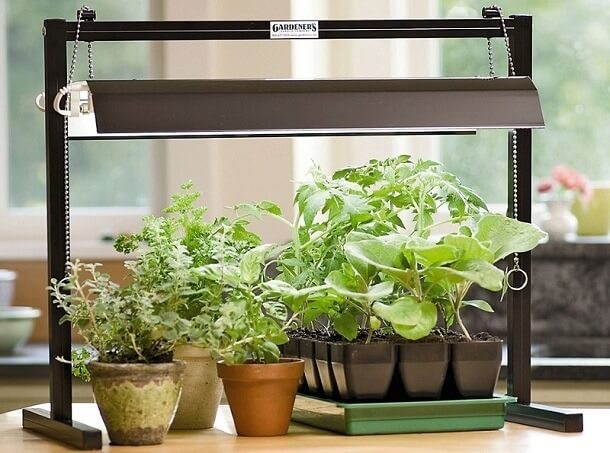
The first thing to consider is the height from the lights to the leaves. The minimum distance should be 15 cm if the plant is photophilous and 55 cm if shade-tolerant. In addition, light should fall on flower pots or seedlings (or aquarium flora) strictly at right angles. Otherwise, the plants will reach for the light and will take on an ugly shape.
Second - each specific species representative of the flora requires its own specific light spectrum. Some flowers need a blue spectrum, some need red. You should first of all learn from florists or read on the Internet about what requirements are required for growing your favorite plant, and then choose the right lamp.
Thirdly, if for some reason you did not find a light bulb with suitable characteristics of light output and spectrum, you can organize combined lighting, for example, fluorescent lamps simultaneously with phytolamps, etc.
That's all I wanted to tell you about which lamps for plants are better to choose and use at home. We definitely recommend viewing a similar article - how to make led aquarium lighting!




